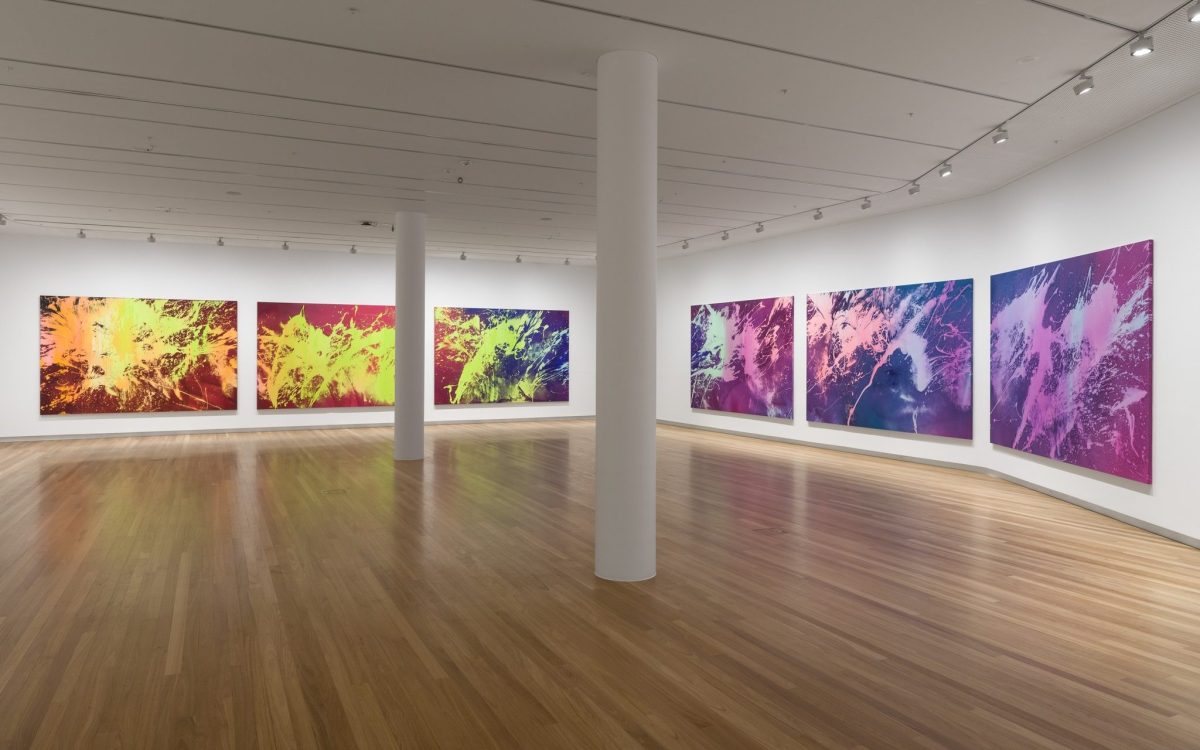Pressure. It gets to artists as much as everyone else, and in many ways even more so.
And yet, anyone who’s witnessed Ash Keating’s liberating painting process wouldn’t imagine him to be an artist under pressure. In a vast, blank space, Keating liberally piles layers of paint onto massive canvases, with his distinctive specially-fitted fire extinguishers, large rollers and buckets of paint. More paint gets on the milk crates and floor than on the canvas. As such, the theatre of it all seems to be a sort of celebration of a carefree approach to painting, rather than one dictated by pressure.
Despite the seemingly carefree process, pressure is evident in both Keating’s life and his art. His physically demanding methodology and the psychological demands common to all artists shape his latest exhibition at Bunjil Place, aptly titled PRESSURE. The exhibition showcases nine canvases, all part of a singular work that gives the show its namesake. On these canvases, colours blend harmoniously yet remain distinct enough to stand alone in various art galleries worldwide.
Each canvas consists of two parts: a darker background and a foreground featuring a vibrant splash of colour representing the pressure of the exhibition. The transition between canvases is fluid, with colours seamlessly blending, creating a visual journey only interrupted by the blank space between the each of them. The foreground’s dynamic colour changes range from yellow to peach to lime green and, similarly, the background goes from blue to black to red, and back to blue, before culminating in purple.
This fluidity between canvases contributes to the conceptual foundation and grandiosity of Keating’s work, transcending the confines of individual canvases. However, this reviewer was left wondering whether PRESSURE missed an opportunity in presenting a clear beginning and end to the piece, instead of formulating it to be less linear. The latter would have allowed for a unique experience for viewers.
The dominant, shifting colours capture immediate attention, especially in the foreground. Yet, the reliance on colour means the enjoyment of the exhibition hinges on one’s appreciation of these vibrant hues. Personally, the red and green paintings stood out to me, as I am generally drawn to those colours in my everyday life.
For those not fond of bright, garish colours, the exhibition may not be enjoyable. However, if it elicits a sense of pressure, then Keating has successfully communicated the exhibition’s concept.
A small but significant touch is the video showcasing Keating’s process, providing insight into what could otherwise be perceived as a generic series of colorful abstract paintings. Placed as a footnote at the exhibition’s end, the video could potentially play a larger, more interactive role at centre stage.
Read: Exhibition review: From The Other Side, Australian Centre for Contemporary Art
Overall, Keating’s methodology is both a blessing and a curse in this exhibition. While it yields unique and beautiful paintings, its canvases prove to be a limiting surface in capturing the scope of his actions. This prompts the question: is the pressure Keating experiences an urge to conform to the canvas when the walls and floors of the space may serve as a more suitable medium? Or is the exhibition’s experimentation an attempt to adhere to typical gallery standards?
Ash Keating: PRESSURE is on view at Bunjil Place until 17 March; free.





